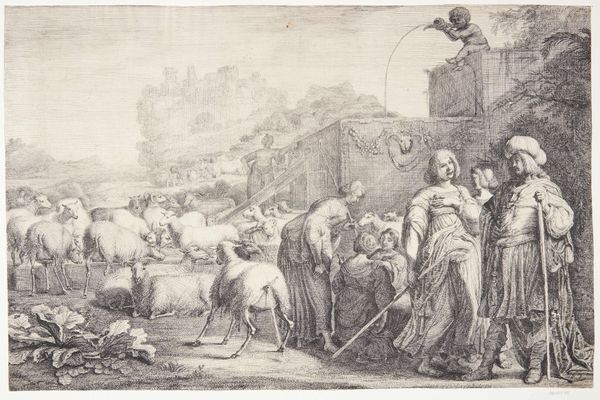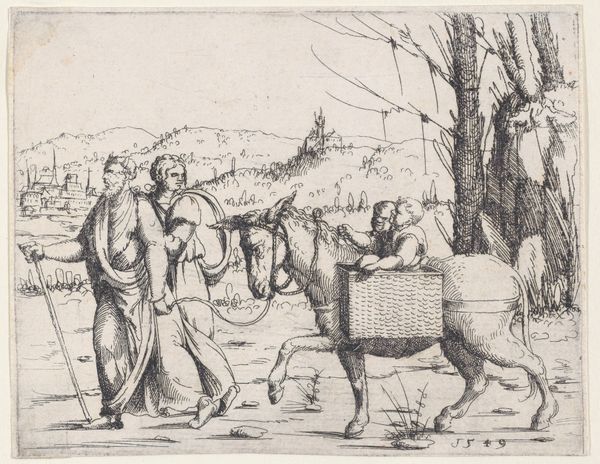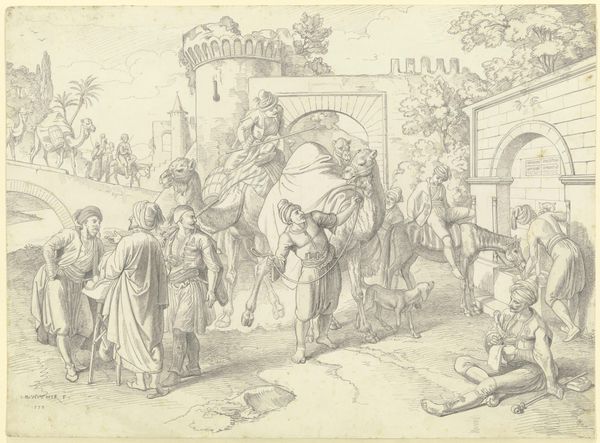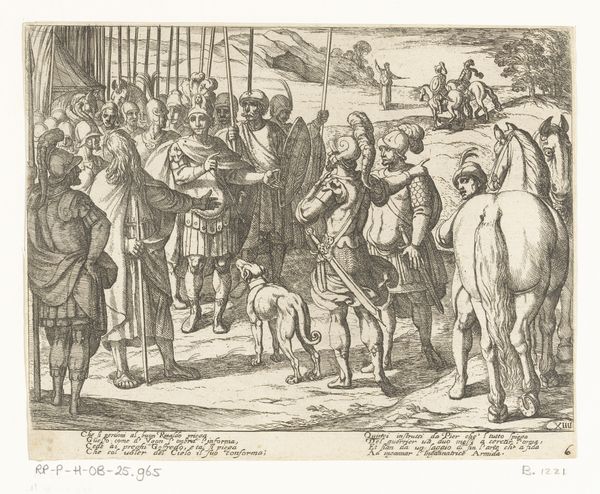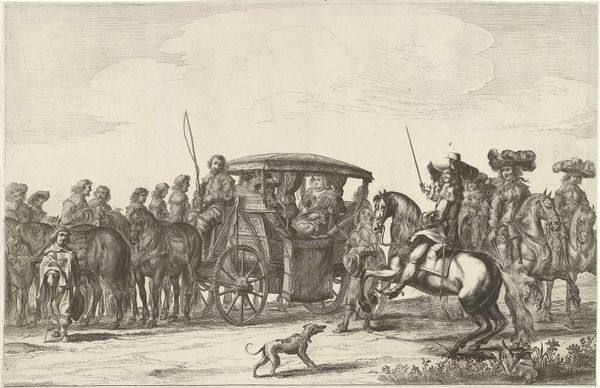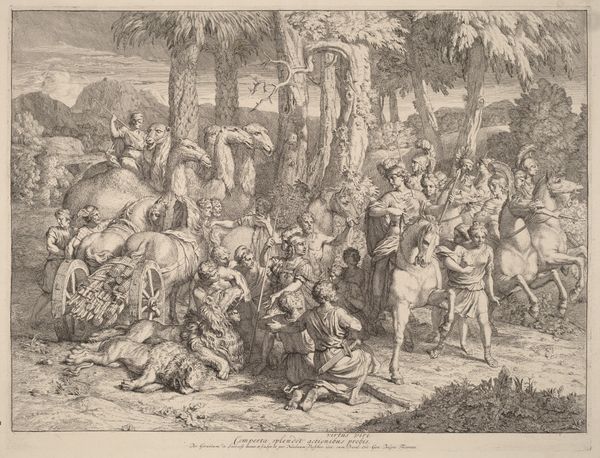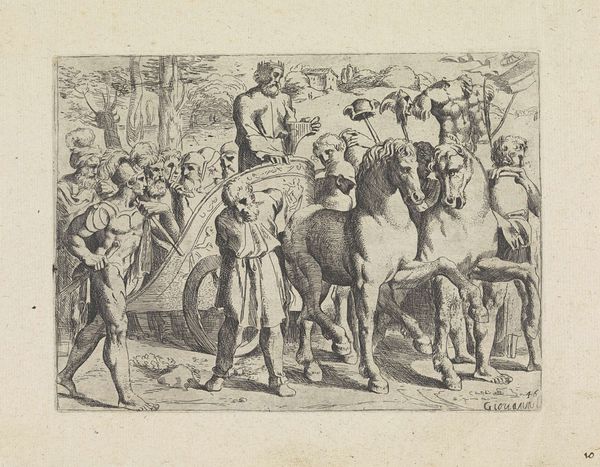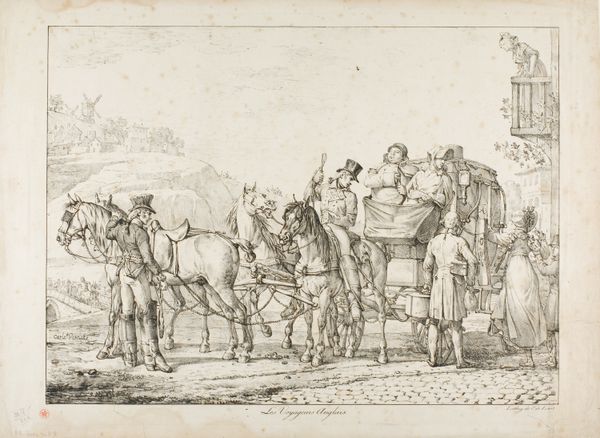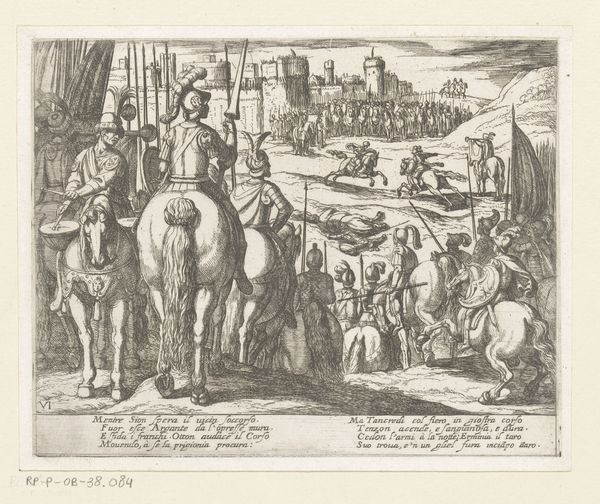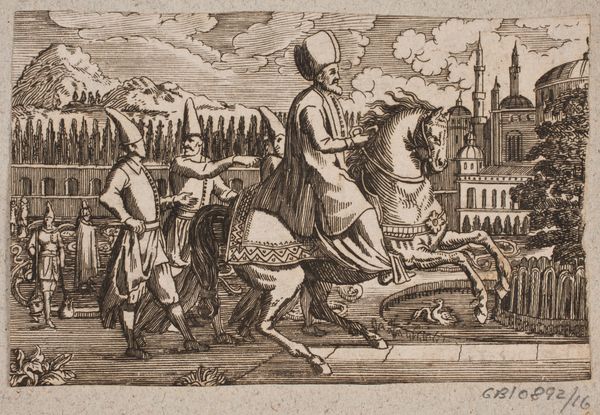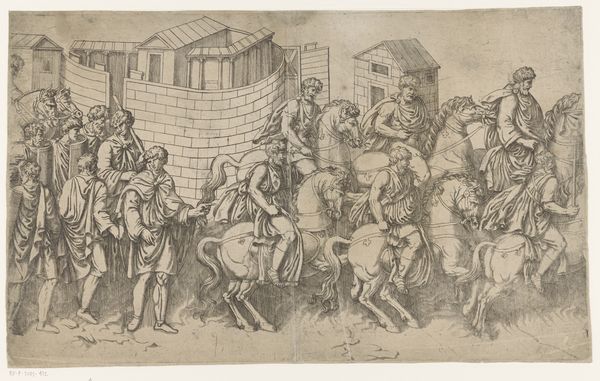
print, etching
#
narrative-art
#
baroque
# print
#
etching
#
history-painting
Dimensions: 295 mm (height) x 447 mm (width) (bladmaal)
Curator: Looking at Gerrit Claesz. Bleker's 1638 etching, "Paul and Barnabas at Lystra," it is immediately arresting how Bleker, through line and composition, constructs a potent scene charged with complex meanings. Editor: Yes, my initial response is the almost overwhelming busyness of the composition, and the very stark, somewhat unsettling tonal range, really speaks to a moment of potential upheaval. The details seem to vie for my attention. Curator: Indeed, the scene depicts a narrative found in the Book of Acts where the Apostles Paul and Barnabas, mistaken for gods, are about to be sacrificed to by the local Lycaonians. We can note here that such a scene can also teach about cultural and religious interactions between different populations, each with unique social values, as well as the influence of the Church at the time it was created. Editor: The presence of the animals really grabs my attention, and also how those animals and people in the foreground create almost a blockade between us and the Apostles. The contrast between the frenzied energy of the would-be sacrificers and what I perceive to be the central figures, Paul and Barnabas, hints at themes of faith and doubt. Curator: That blockade may point at how the artist sought to stage the public, religious theatre as one that, on the one hand, gives precedence to the status and the order of the Roman Empire. We might observe the inclusion of the statue atop a pillar as a not-so-subtle form of this cultural marking. But at the same time, that order comes under the Apostles' condemnation for their ritualistic idolatry. Editor: It brings to light the problems related to intercultural relations, doesn't it? The crowd wants to bestow power, seeing miracles and possibly misunderstanding the Apostle's teachings in the process, and the figures respond in disbelief, presumably declining. Thinking of modern contexts, that push and pull of power speaks to contemporary themes like the rejection of the figurehead, but also potentially reflects questions about messianic figures and even cult-like devotion. Curator: I think looking at the piece from this angle demonstrates how it reveals a crucial aspect of art’s historical function, not only in conveying Biblical narrative, but also in mirroring, challenging, and negotiating prevalent societal structures and norms. Editor: Definitely! The artist encourages us to engage in this discourse by providing insight into questions of value, power, and community at a key point in Western history, while leaving it open to our own interpretation and contemporary critiques.
Comments
No comments
Be the first to comment and join the conversation on the ultimate creative platform.
